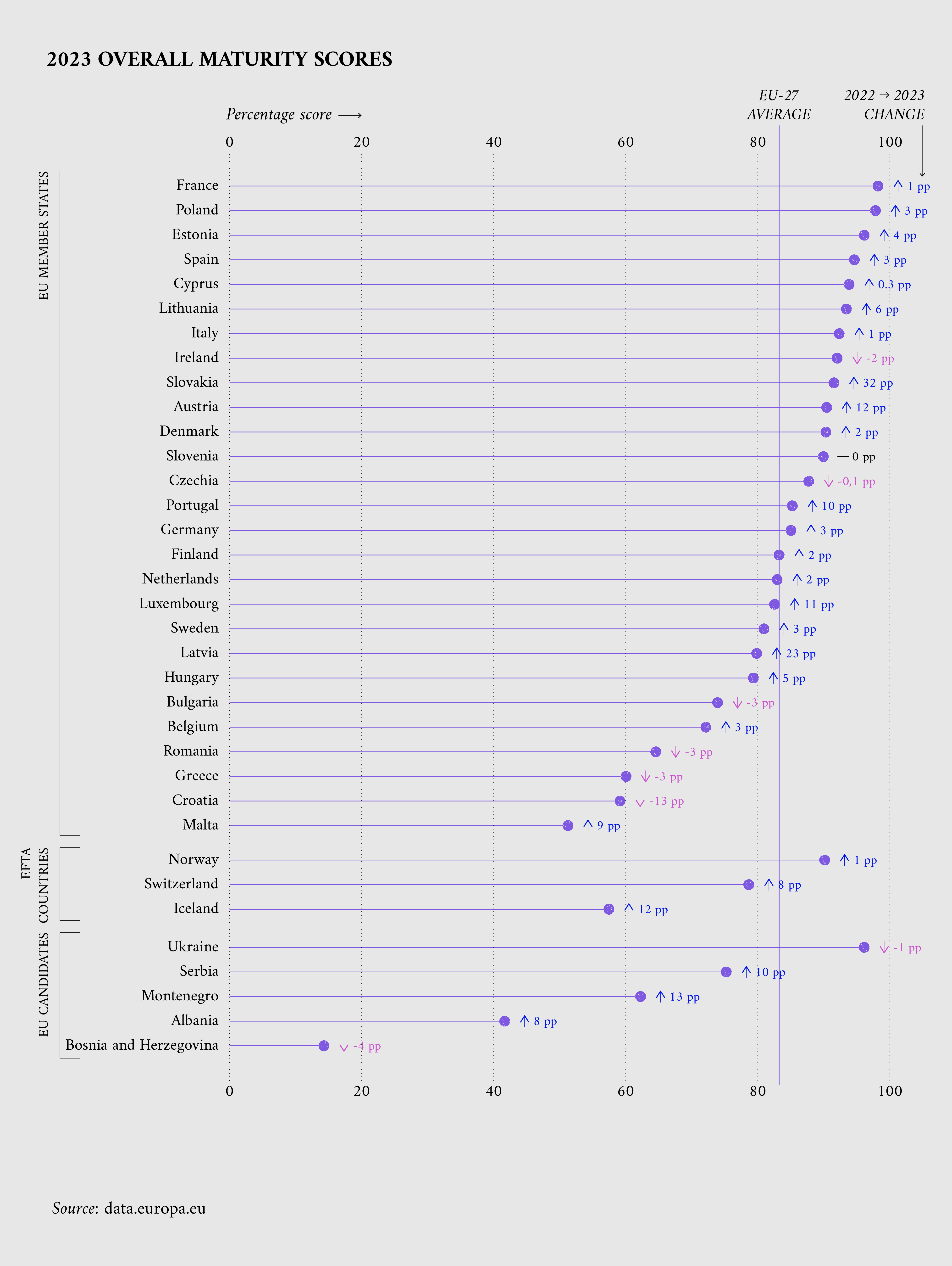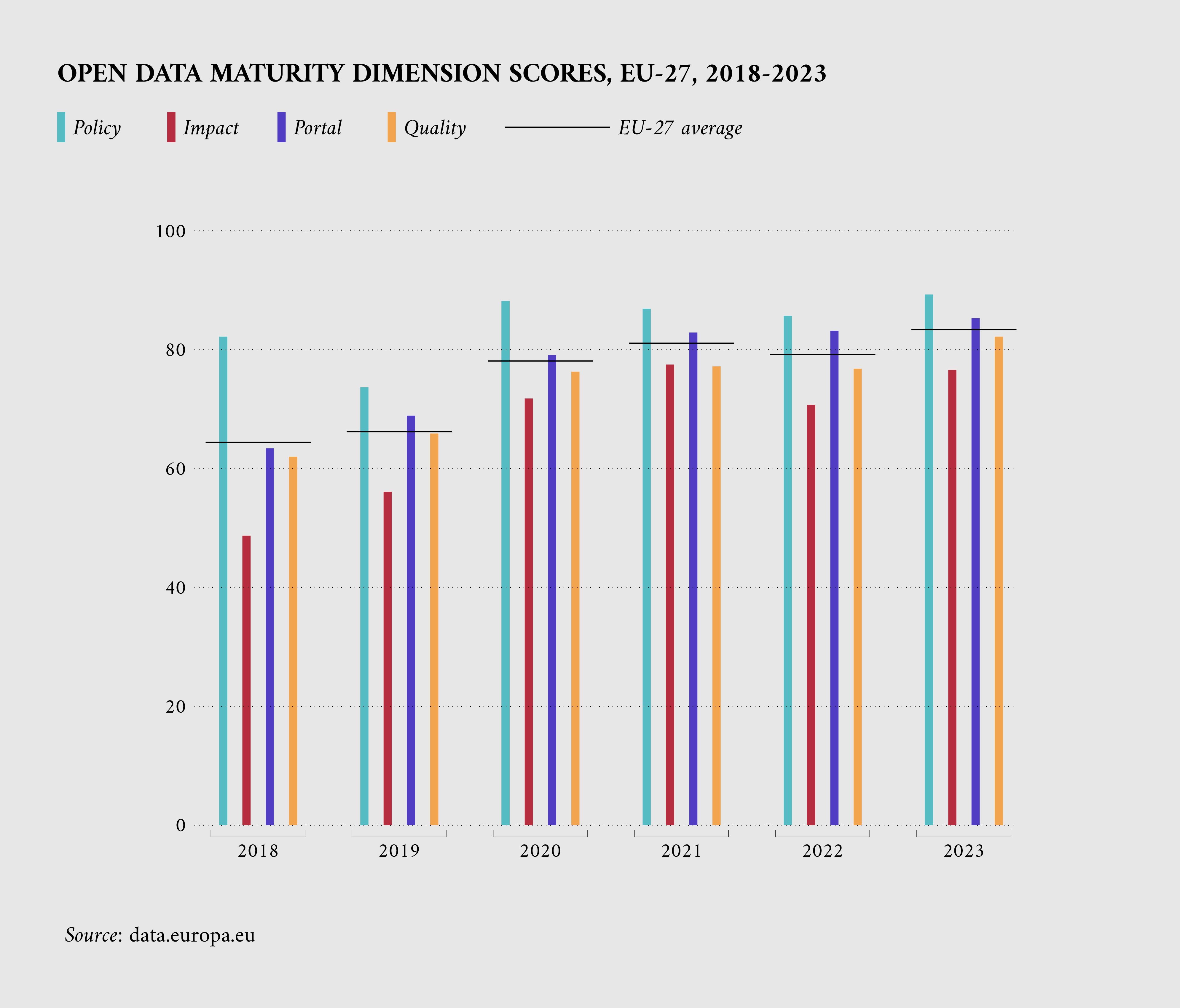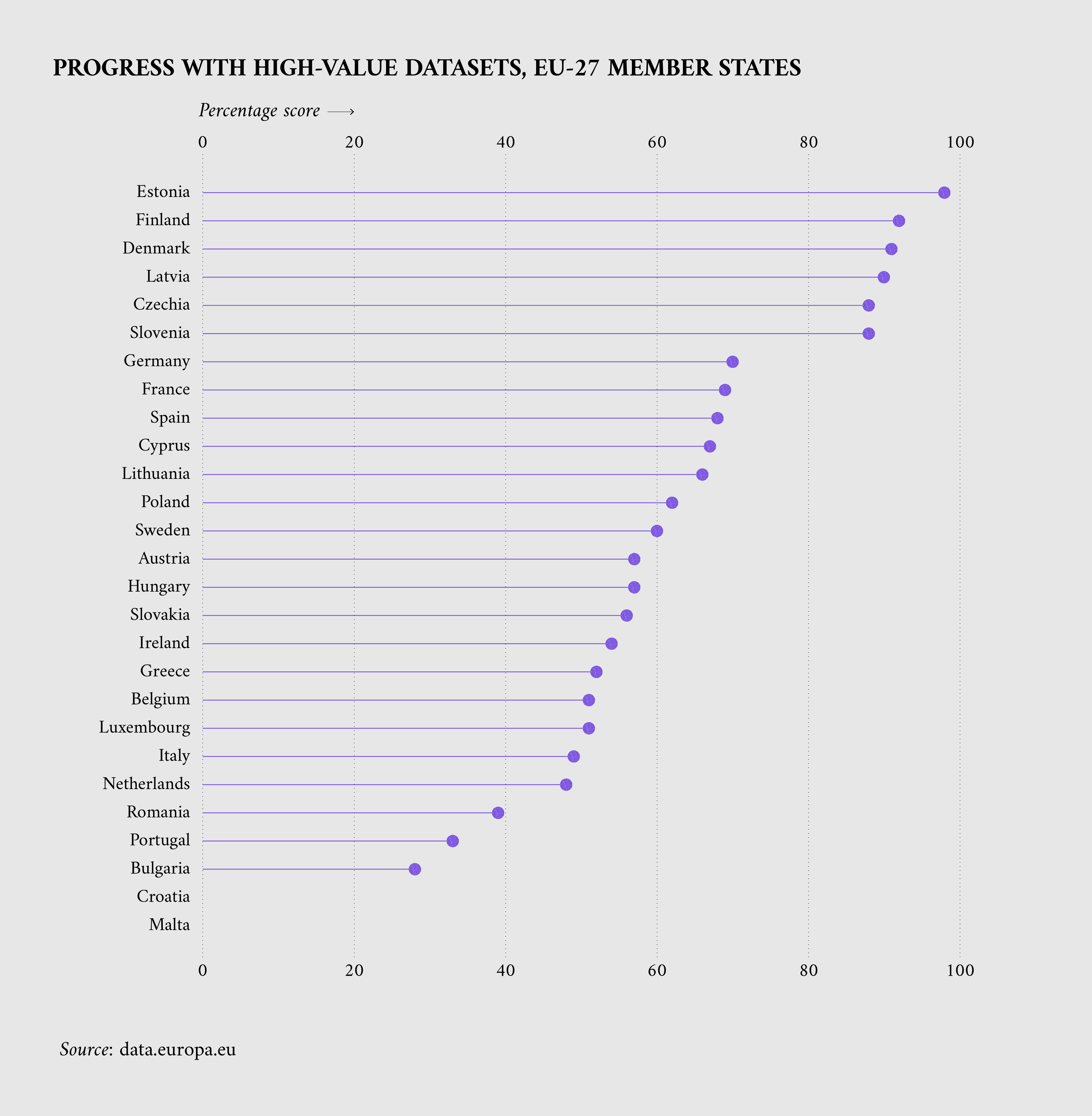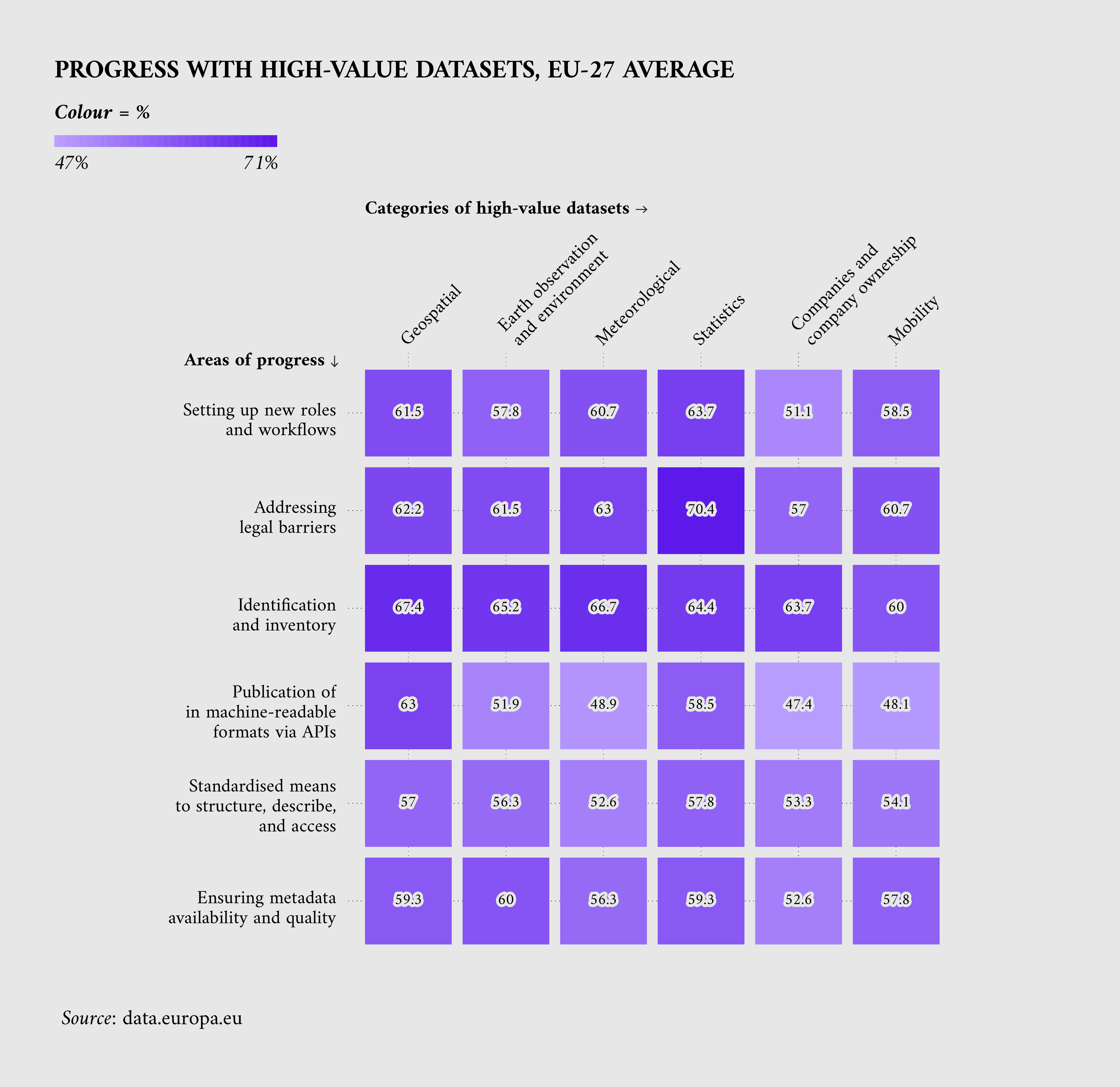Open data maturity in Europe in 2023
The ninth annual open data maturity report reveals how the data-sharing ecosystem in Europe continues to evolve
The open data maturity (ODM) assessment by data.europa.eu measures the progress of European countries in making public sector information available and stimulating its reuse. The results show the level of maturity of the participating countries and support the development and sharing of best practices regarding open data across Europe.
A total of 35 countries participated in the ninth consecutive annual report, including the 27 EU Member States, three European Free Trade Association countries (Iceland, Norway and Switzerland), and five candidate countries (Albania, Bosnia and Herzegovina, Montenegro, Serbia and Ukraine).
This data story highlights the findings of the 2023 ODM report and the key trends for each of the four dimensions of the assessment: policy, impact, portal and quality. As in previous years, data for the assessment is collected through a questionnaire sent to the representatives of the participating countries, which they can fill out on a voluntary basis. Answers to the individual questions are translated into scores for the four dimensions. The full details of the methodology are described in the 2023 method paper.
Overall open data maturity in 2023
In 2023, the average maturity score across all the participating countries reached 79 %, a slight increase from 75 % in 2022. In the EU-27, it rose from 79 % in 2022 to 83 % in 2023. The change in country scores from 2022 to 2023 is shown Figure 1. The rise in average maturity was driven by increases in the scores of all four dimensions. The most significant increases concern the impact and quality dimensions (see ‘highlights’ sections below).

Figure 1: Overall maturity scores for all participating countries in 2023, ranked from highest scoring to lowest scoring within the groups of countries (source: 2023 ODM report)
The following sections explain key trends and country success stories for each dimension of the assessment. Figure 2 shows the evolution of average scores across the ODM dimensions for the EU-27.

Figure 2: Average open data maturity scores in the EU-27 per dimension (2018–2023) (black bar represents the EU-27 average) (source: 2023 ODM report)
Highlights from the policy dimension
Policy remains (since the first report in 2015) the most mature dimension on average, with the governance and implementation of open data initiatives improving since 2022 to better support the policy framework.
One topical policy evaluated in the report is the implementing regulation on high-value datasets (Regulation (EU) 2023/138), which will take effect in June 2024 for the EU-27 countries. High-value datasets are public sector datasets that have significant benefits for society, the environment and the economy. Figure 3 shows the overall progress EU Member States report regarding the requirements of high-value datasets. Front-runners in preparing for high-value datasets include Estonia, Finland, Denmark and Latvia.

Figure 3: Overall progress of EU-27 Member States towards implementing the regulation on high-value datasets (source: 2023 ODM report)
On average, the EU Member States are making the most progress with geospatial and statistics datasets. Regarding the underlying technical and legal requirements, identifying and inventorying high-value datasets and addressing legal barriers are the most advanced. In general, requirements related to technical progress, such as metadata quality, standardised structures, and machine-readable formats show less advancement. Figure 4 shows the aggregated progress score of countries across several technical and legal requirements for the six categories of high-value datasets.

Figure 4: Average progress of the EU-27 Member States for the six categories of high-value datasets (source: 2023 ODM report)
Highlights from the impact dimension
The impact dimension remains the least mature dimension but saw the greatest year-on-year improvement, making up lost ground after a sharp decrease in 2022. One of the countries that improved the most on this dimension from 2022 is Iceland (from 10 % to 45 %).
To achieve its significant improvement, Iceland put processes and incentives in place to monitor the level of open data reuse, including training civil servants; launched initiatives to document which and how open datasets are reused, including analysing portal usage statistics; and created a definition for open data impact. These activities also resulted in a greater awareness of reuse case examples in different domains of impact.
Highlights from the portal dimension
The portal dimension remains the second most mature, but saw the smallest improvement compared to 2022. Although the provision of data continues to increase, portal features are not becoming more sophisticated. One country that made substantial progress on this dimension is Latvia (from 61 % to 87 %).
Latvia introduced new portal features, such as a discussion forum, conducted analyses of portal traffic and surveys of user satisfaction, ensured that local and regional portals are discoverable and automatically harvested on the national portal, and enabled official and non-official data to be published on the national portal.
Highlights from the quality dimension
The quality dimension shows an accelerated improvement, closing the gap with the portal dimension after 3 years of stagnant maturity. Compared to 2022, more EU Member States are working to ensure the interoperability of datasets, particularly high-value ones (from 17 to 22 Member States). This is also reflected in the increased use of mandatory DCAT-AP classes to describe metadata on national portals (from 19 to 23 Member States).
A specific country that made significant progress on this dimension is Serbia (from 56 % to 70 %). Some key activities Serbia reported include creating guidelines and conducting regular activities to assist data providers in publishing high-quality metadata. They also report that, compared to 2022, more metadata is obtained automatically from its source and most datasets on the national portal have an open licence available in a structured format.
Conclusion
Countries in Europe continue, on average, to advance on the four dimensions of ODM defined in the ODM methodology, even as the data-sharing ecosystem in Europe continues to evolve. The next year will also bring new requirements for open data teams. The Member States must apply the implementing regulation on high-value datasets by June 2024. Furthermore, the European Commission is establishing common European data spaces to support the additional data needs of European governments, businesses and civil society that cannot be addressed exclusively using public administrations’ open data. New legislation such as the Data Governance Act (Regulation (EU) 2022/868) and the Data Act (proposal) introduce measures to increase data availability and overcome technical obstacles to the reuse of data that cannot be made available as open data.
In addition, a periodic revision of the ODM methodology is planned for 2024. The purpose of this revision is to incorporate contemporary policy and technology changes in the assessment to be more accurate and continue to help countries in their constant improvements. The year 2024 will also mark the 10th anniversary of ODM.
Interested in the full insights from the 2023 ODM report? Read the report.
Also, stay tuned for our upcoming data stories and webinars by subscribing to our newsletter and following data.europa.eu on social media.
